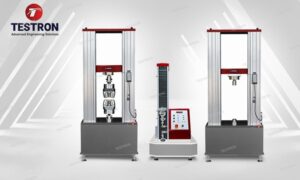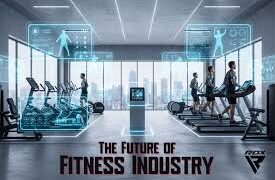“Before you dive headlong into conjecture, first gather your data,” says tech manufacturing expert, Rajarshi Ghose Dastidar, borrowing the wisdom of the eminent detective, Sherlock Holmes. Yet Dastidar isn’t solving criminal enigmas. Instead, he’s operating in the complex domain of the manufacturing industry, threading through data, analytics, and Artificial Intelligence (AI) to discover novel strategies that can substantially transform how businesses function and compete.
As technology thrives at an unprecedented pace, traditional manufacturing practices are being challenged by new approaches that emphasize efficiency, adaptability, and sustainability. According to Dastidar, the manufacturing sphere is no longer merely about factories and production lines; it now encapsulates various digital procedures and intelligent technologies.
The AI Renaissance in manufacturing
Dastidar’s influence in the industry is unmistakable, with over a decade of experience under his belt starting from his stellar educational background, attaining a Bachelor’s in Electrical & Electronics Engineering from Manipal Institute of Technology in India and a Master’s in Supply Chain Management at The University of Texas at Dallas. In the professional world, Dastidar now works as Strategy & Analytics Manager at the biggest consulting firm in the world and underscores the pivotal role AI plays in transforming the manufacturing sector.
As per a Forbes report, the AI market size is projected to skyrocket to $407 billion by 2027 and anticipates a 21% net hike in the United States GDP by 2030. According to Dastidar, this shift is already underway.
“Manufacturing organizations worldwide are grappling with a mounting array of challenges, including market volatility, fiercer competition, intricate supply chains, escalating costs, scarcity of skilled personnel, fluctuating customer demands, and cybersecurity threats,” Dastidar comments.
Tackling these hurdles necessitates strategic planning, agility, and an increased focus on exploiting technological advancements, such as automation, AI, and the Internet of Things. Firms adopting these new technologies early will likely succeed and experience fewer disruptions.
Streamlining supply chains and customer interactions
AI’s impact isn’t confined to automation and enhancing efficiencies within the factory floor. Its influence permeates various aspects of manufacturing. Central to Dastidar’s vision is integrating data analytics and AI into the design and production stages of manufacturing, from boosting customer experiences via hyper-personalized marketing to automating financial reporting processes. He specializes in collecting and analyzing vast amounts of data to provide valuable insights that inform decision-making and drive product innovation.
Dastidar is assisting businesses to gain valuable insights into their supply chain, identify bottlenecks, streamline logistics, and enhance overall operational performance. He explains that this process includes optimizing inventory management, improving production scheduling, and implementing demand forecasting models to align supply with market demand.
Under Dastidar’s guidance, manufacturing companies have successfully adopted AI technologies that enable them to design and prototype products more efficiently, reduce time-to-market, and improve product quality. These advancements have revolutionized the industry, allowing businesses to stay ahead of high consumer demands while delivering superior products that resonate with their target market.
He shares, “My vision is to innovatively use data and analytics to help organizations make faster, better, and more resilient supply chains that will support sustainability goals, improve overall production efficiency, and most importantly, drive growth and profit. All these so that manufacturers can thrive in an increasingly dynamic and competitive manufacturing landscape.”
Driving high-level data literacy
Dastidar mentions how some may argue about the sustainability of AI’s rapid infiltration of manufacturing processes, including the aspect of neglecting the human factor. However, he thinks otherwise. For him, leveraging data and AI is an opportunity for people to be more efficient to propel greater productivity and success in their industries.
Dastidar shares his perspective, “Indeed, the human component in manufacturing cannot be ignored. AI is not about replacing humans; instead, it’s about amplifying human potential, which is what we are looking forward to with Industry 5.0 principles that will redefine the relationship between humans and machines. It’s about enabling humans to focus on higher-level tasks and decisions while AI handles repetitive tasks, predictive analyses, and error detection. Through AI-driven solutions, machines become more intuitive, understanding human gestures, expressions, and commands. Natural Language Processing capabilities empower factory workers to communicate seamlessly with machines, providing instructions, asking questions, and receiving real-time feedback. This fosters a collaborative environment, where machines act as trusted assistants, augmenting human capabilities. It’s a collaborative future we’re building, not an adversarial one.”
To achieve this, Dastidar extends his influence beyond the technological sphere to become a popular speaker and industry influencer. He is often invited to share his insights and experiences at various conferences and events, advocating for organizations that skillfully leverage data to their advantage.
The future is now
Drawing from his vast experience, Dastidar offers a final insight, “The potential of AI is expansive, yet it remains somewhat untapped in the manufacturing sector. The businesses that will flourish in the future will be those capable of harnessing this potential to influence their strategic decisions. The challenge is daunting, but the rewards are equally enticing.”
Looking ahead, Dastidar is fully committed to continuing his game-changing work in the manufacturing field with data and analytics. He is driven by a relentless passion for leveraging the immense potential and limitless industry possibilities for improving manufacturing processes, delivering enhanced services to consumers, and pushing the boundaries of what is achievable in the manufacturing industry. He serves as a guidepost, shining a light for others to follow. As AI’s influence continues to expand and thrive, it becomes evident that society now stands on the precipice of a transformative era, one propelled by forward-thinkers such as Rajarshi Ghose Dastidar.



































